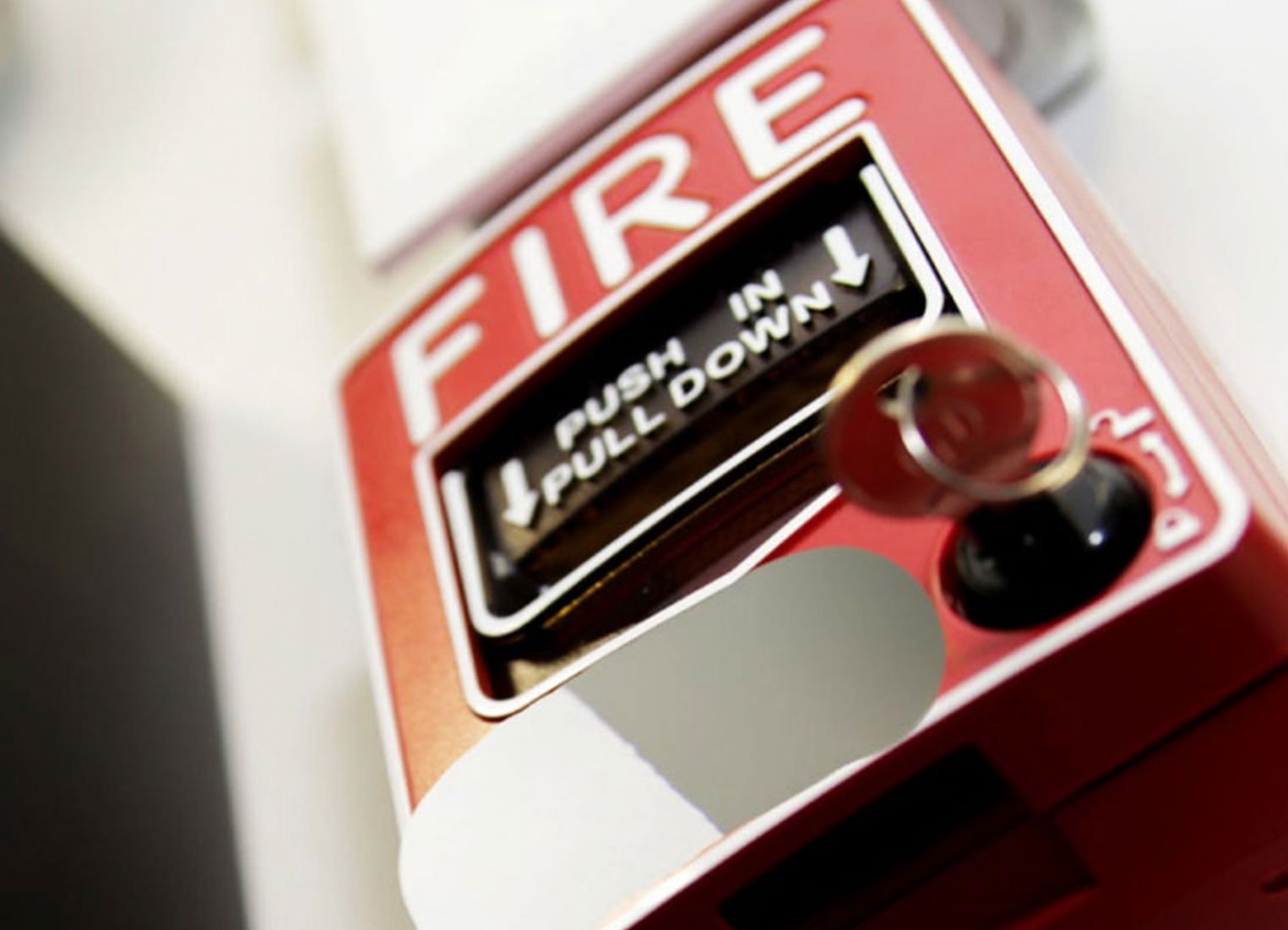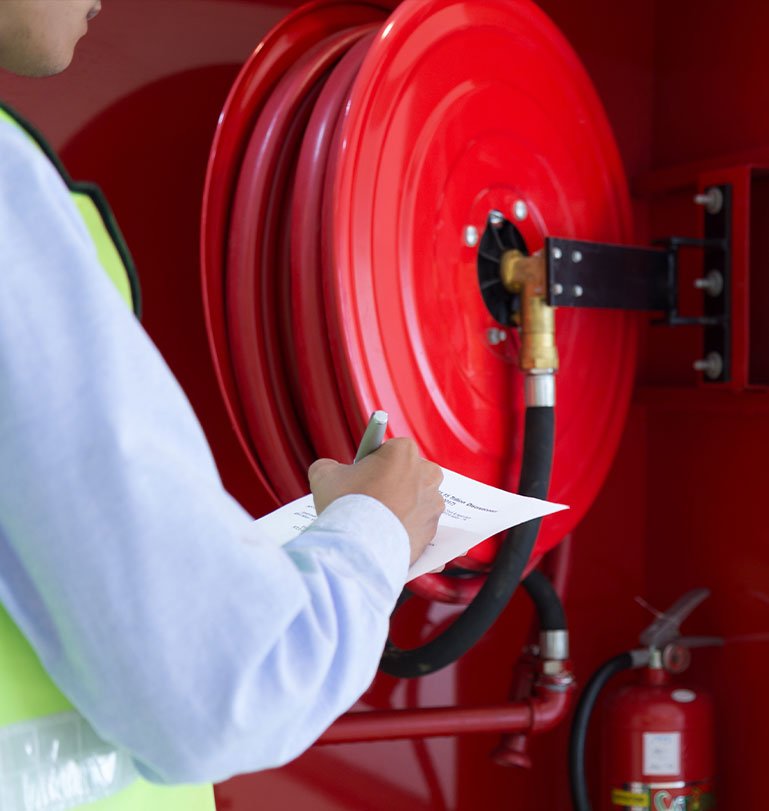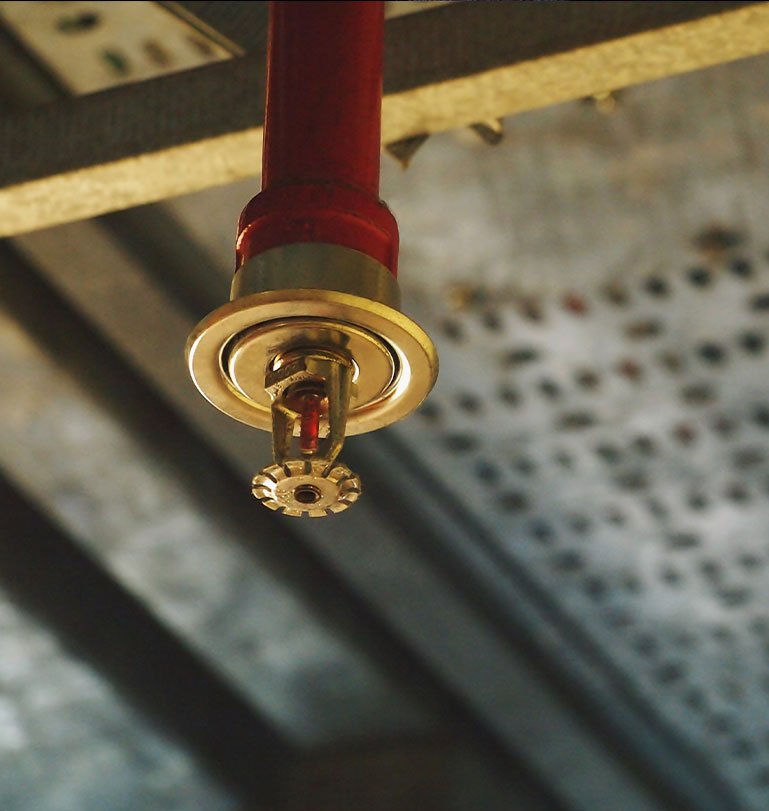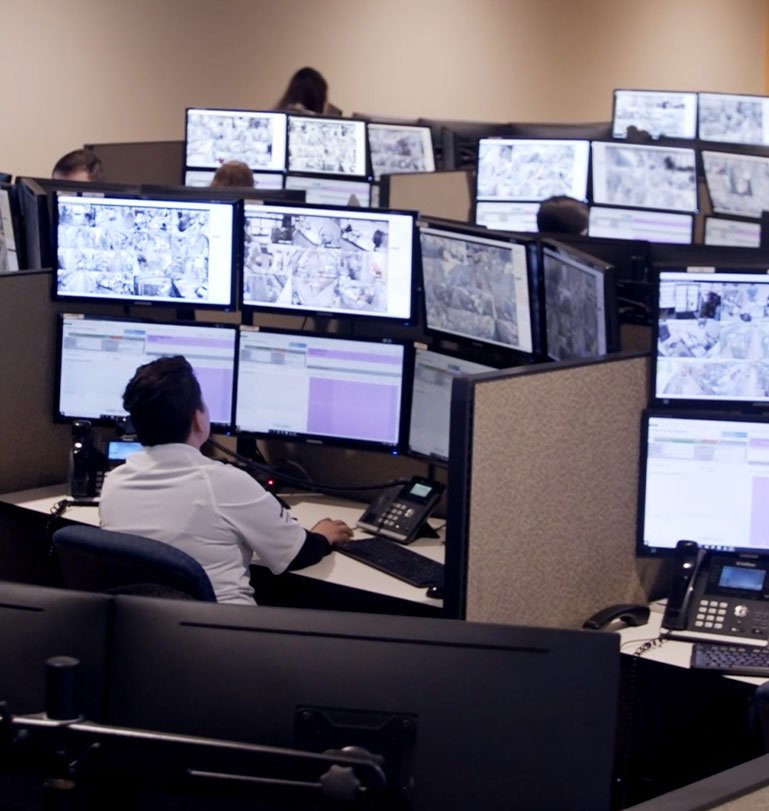Fire Alarm Systems for Comprehensive Protection
Secure your people and assets with a fully managed, AHJ-compliant, commercial fire alarm system designed and engineered by our NICET-certified team. Get proactive remote fire alarm monitoring 24X7X365 and certification support nationwide.

Why You Need Fire Alarm Systems from Interface
Code Compliance Is Complex for Multi-Location Businesses
When you have business locations across county and state lines, ensuring every location meets the fire code defined by the authority having jurisdiction is a major challenge. The differences in regulations have a cascading effect on procuring all the required hardware and enforcing maintenance protocols as needed.
Fire Alarm Vendor Management Is Cumbersome
Legacy Fire Alarms Are Expensive to Maintain
Switch to a Turnkey Fire Alarm Solution
Simplify Fire Alarm Management
Customers can confidently address fire hazards and safety risks with a simple pricing plan and a flat-rate monthly maintenance fee.
- Consolidate installation, service, and inspections with one trusted partner
- Address fire alarm notification gaps
- Fix code compliance gaps
- Upgrade alarms for renovated buildings and occupancy changes
Upgrade to Cellular Fire Alarm Communicators
- Eliminate expensive leased line costs
- Future-proof your alarm system
- Enjoy plug-and-play installation
- Gain fast data transfer to our interactive Security Operations Centers
- Get over-the-air communicator firmware updates
Interface Comprehensively Manages Fire Alarm Implementation and Monitoring

Fire Hazard & Risk Assessment
- Evaluate fire risks at the location
- Identify AHJ code gaps in existing installations
- Address customer-specific fire alarm needs
- Review data on fire alarm effectiveness

Fire Alarm System Design
- Review building plans to identify alarm requirements
- Consult with contractors and architects
- Identify existing components
- Create the design and parts list

Implementation & Certification
- Identify placement and wiring points for alarm components
- Prepare submittal booklets and drawings for AHJ permits
- Coordinate with component vendors for deliveries

Fire Alarm Monitoring & Maintenance
- Monitor fire alarms 24X7X365
- Dispatch fire services and inform contacts as per escalation protocols
- Ensure post-incident audits to minimize false alarms and revise escalation protocols
- Conduct periodic maintenance testing for all fire alarm components to remain code-compliant
Five Diamond Rated Security Operation Centers for Fire Monitoring
Interface’s interactive Security Operation Centers are staffed by a trained team of intervention specialists who can proactively evaluate the situation and take the best course of action to save lives and protect assets.
What’s Monitored by Interface
- Wiring for all alarm circuits
- Contacts for primary and secondary power supply
- Smoke detectors, heat detectors, carbon monoxide detectors, gas detectors
- Micro switches, kitchen hood fire protection panel
- Releasing panel of clean agent systems for alarm, supervisory and trouble signals
- Pump controllers and the valves and switches on the pump manifold
- Electric and diesel pumps
- Water pressure switches, air pressure switches on dry systems trim
- Area of Refuge (AOR)
- Water tank level switches and temperature sensors
- Tamper switches on the control valves
- Fuel levels for diesel fire pumps
- Pre-action sprinkler systems, foam suppression, deluge systems
Why Interface for Fire Alarm Services?
Get predictable outcomes with a flat-rate monthly invoice that greatly enhances the ability of security teams to manage costs and improve fire safety.
Interface maximizes the ROI of commercial fire alarm systems by minimizing a “rip and replace” approach to alarm design and implementation.
- Utilize existing wiring if they are of good quality
- Reuse conduit paths by installing new devices on the same line
- Reuse UL-listed compatible equipment with Fire Alarm Control Panel (FACP)
- Reuse UL-listed notification system with new power supplies or FACP
- Evaluate maintenance support bottlenecks upfront when reusing components
Unhappy with your fire alarm service provider and too many vendors to deal with? Interface can take over the maintenance and fire alarm monitoring of select fire alarm systems.
- Complete monitoring and maintenance takeover
- Transition monitoring and notification protocols
- Identify sources of service issues and suggest improvements
- Upgrade wiring, components, and sensors on a need basis
- Help secure AHJ certifications
Interface has strategic partnerships with leading fire alarm equipment vendors. Our customers benefit from our relationships as we have priority access to support and insights into product roadmaps and new technologies.
- The Honeywell family of fire alarm systems, namely – Silent Knight, Fire Lite, and Frenhyt, are designed to protect a wide range of sites and are recognized by most AHJ.
- DMP fire alarm solutions are designed to address the fire protection needs of small sites and customers looking to implement a combination of fire and burglar alarm solutions.
- Edwards offers solutions like the iO and EST fire safety product lines suitable for small sites and large or complex installations.
Frequently Asked Questions
A fire alarm system requirement is based on the building size, whether it has a fire sprinkler system, the occupancy classification of the building, the occupant load of the building, number of floors in the building, and the occupancy load in each floor.
Interface evaluates every location individually to understand fire risks and the local fire regulations defined by the Authority Having Jurisdiction (AHJ) as there is no nationwide AHJ standard. Based on this evaluation, Interface will design and install a fire alarm system that best addresses these risks and meets or exceeds the AHJ regulations. Interface technicians are located in most major cities and counties across the United States for ongoing service and maintenance of fire alarm systems.
Fire alarm system monitoring is required in all buildings that require a fire alarm system or fire sprinkler monitoring system. Single and multi-station smoke alarms in single-family homes are not required to be monitored.
- Fire alarm control panel: This is the main control center for the fire alarm system. It receives information from the various sensors and detectors throughout the building and triggers the appropriate response.
- Smoke detectors: These devices detect the presence of smoke and trigger the alarm when smoke is detected.
- Heat detectors: These devices detect increases in temperature and trigger the alarm when the temperature reaches a certain threshold.
- Manual pull stations: These are wall-mounted switches that can be manually activated to trigger the fire alarm.
- Notification devices: These devices, such as horns, strobes, and speakers, alert occupants to the presence of a fire and provide directions on evacuation procedures.
- Sprinkler systems: In some cases, a commercial fire alarm system may be connected to a sprinkler system that automatically activates when a fire is detected.
- Backup power supply: A commercial fire alarm system typically includes a backup power supply, such as a battery or generator, to ensure that the system remains operational during power outages or other disruptions.
The fire alarm panel reports its alarm, trouble, supervisory signals to the supervising monitoring station/ central station that receives the signal from the panel. These signals get dispatched from the supervising agent to the fire department, alarm service company, and owner that the fire alarm system. If the fire control panel is in alarm mode, the fire department will roll trucks to the property.
Advantages of a wired fire alarm system:
- Relatively stable system
- Fewer battery faults
- Fewer service calls
- Faster programming
- Faster test times
- Fewer false alarms
- Lower equipment cost. Wired fire alarms cost about three times less than a wireless alarm device
Disadvantages of a fire wired alarm:
- Possibility of ground faults
- More costly install due to added wire cost and labor to install the wire
Advantages of a wireless fire alarm system:
- Labor-saving installation
- Faster troubleshooting for service
- No ground faults
- Suitable for retrofitted or historical buildings where pulling wire will be difficult
- Avoid digging trenches and repaving asphalt or concrete to monitor sprinkler valves located outside the building.
Disadvantages of a wireless fire wired alarm
- Frequent battery faults and mandatory battery replacement every year
- Repetitive service calls
- Loss of wireless signal
- Additional cost for programming and signal testing
- Longer test times
- More frequent false alarms
- Higher equipment cost. Wireless fire alarm devices are about three times the cost of wired devices.
- Additional devices needed for communication and programming
Interface can take over the maintenance and monitoring of fire alarm systems that include components manufactured by the following vendors - Silent Knight, Fire-Lite, Farenhyt, Honeywell Vista, DMP, EST, & Bosch. We are unable to take over the maintenance and service of proprietary fire alarm systems such as those installed by Simplex, Notifier, Siemans, Gamewell, FCI, Faraday, to name a few.
Restaurants have specific fire safety concerns due to the use of open flames, high temperatures, and cooking oils. The usage of specialized fire alarm systems in a restaurant will depend on factors such as the size of the kitchen, the type of cooking equipment used, and local fire safety regulations.
Here are some of the specialized fire alarm systems used in restaurants:
- Kitchen hood suppression system: This system is designed to detect and suppress fires that may occur in cooking hoods and ductwork. The system typically uses a combination of sensors, extinguishing agents, and control panels to quickly extinguish the fire and prevent it from spreading to other parts of the kitchen.
- Pre-action sprinkler system: A pre-action sprinkler system is designed to provide an additional layer of protection for areas where traditional sprinklers may not be suitable, such as areas with sensitive electronic equipment or high-value inventory. The system uses a combination of sensors and control panels to trigger the sprinklers only when a fire is detected, reducing the risk of accidental discharge.
- Gas detection system: Some restaurants use gas-fired cooking equipment, such as ovens, grills, and fryers. A gas detection system can be used to monitor the levels of combustible gases, such as natural gas or propane, and trigger an alarm or automatic shut-off valve if the levels become too high.
- Emergency power shut-off: In the event of a fire, it may be necessary to shut off power to the kitchen or other areas of the restaurant. An emergency power shut-off system can be used to quickly and safely cut power to affected areas, reducing the risk of electrical fires and electrocution.
There are a few fire alarm system components that may be specific to retail chains, depending on their specific requirements and local fire safety regulations. Here are some examples:
- Addressable fire alarm system: This type of fire alarm system allows for more precise detection and location of fires within a retail chain. Each device on the system has a unique address, making it easier to identify the exact location of the fire.
- Public address system: A public address system can be used to broadcast emergency messages and evacuation instructions to customers and staff in the event of a fire.
- Smoke extraction system: Retail chains with large, open-plan spaces may use smoke extraction systems to remove smoke from the building, helping to improve visibility and reduce the risk of smoke inhalation.
- Fire shutters: In some cases, retail chains may install fire shutters to prevent the spread of fire between different parts of the building. These shutters can be automatically activated by the fire alarm system.
Upgrade to a Hassle-Free Commercial Fire Alarm Installation and Monitoring
Related Services